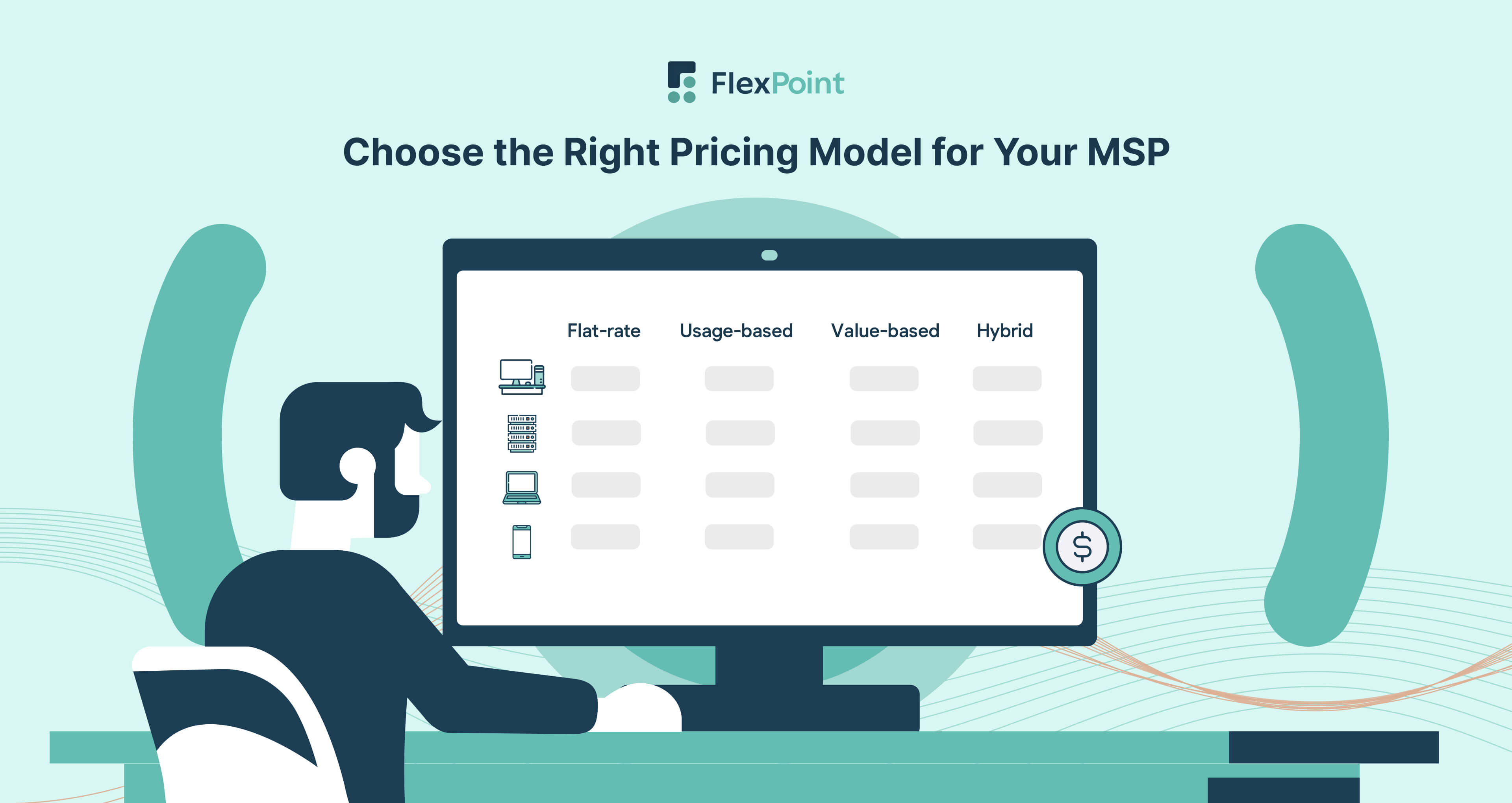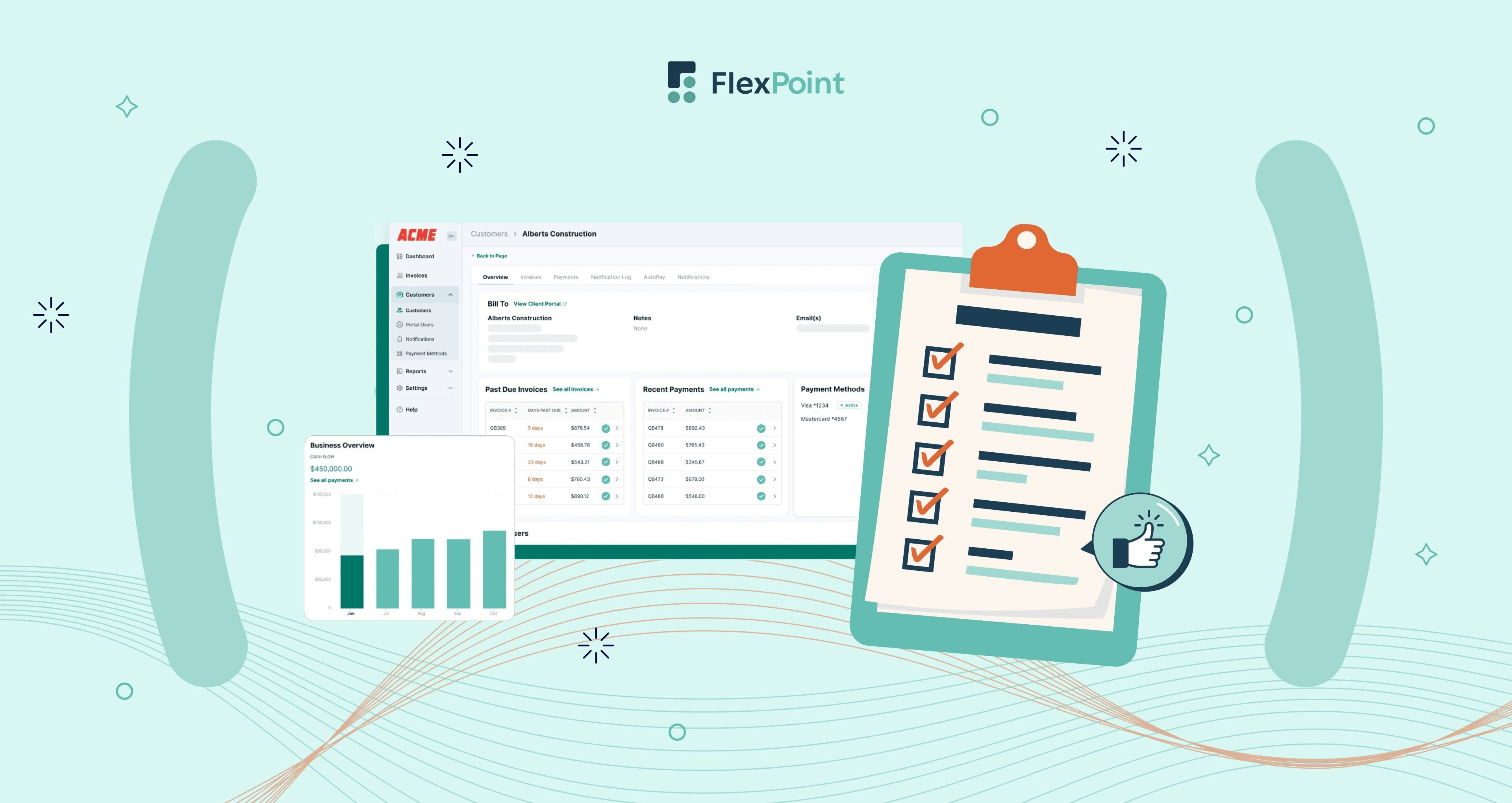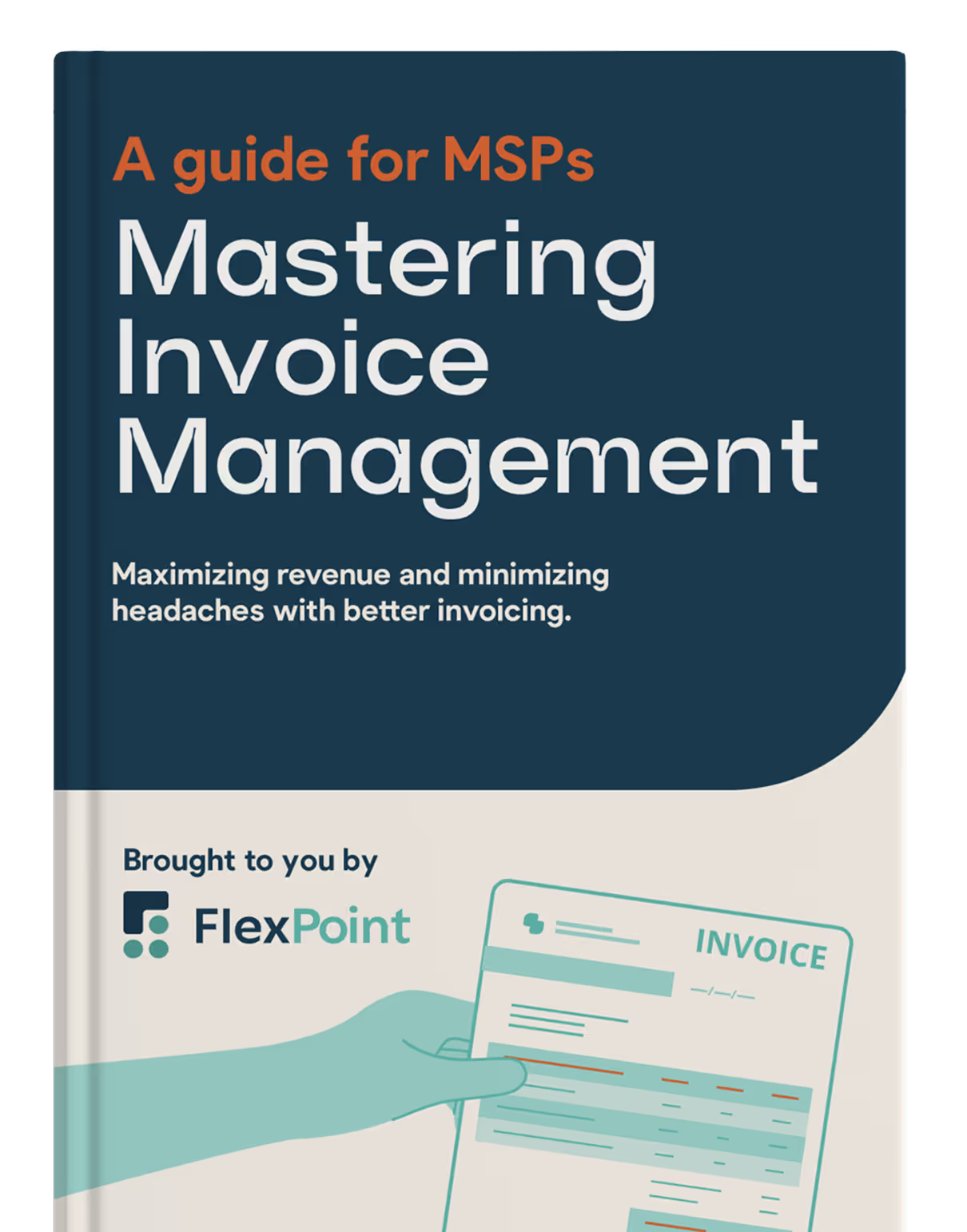Optimizing MSP Billing Operations: Benefits of Advanced Billing Software Integration
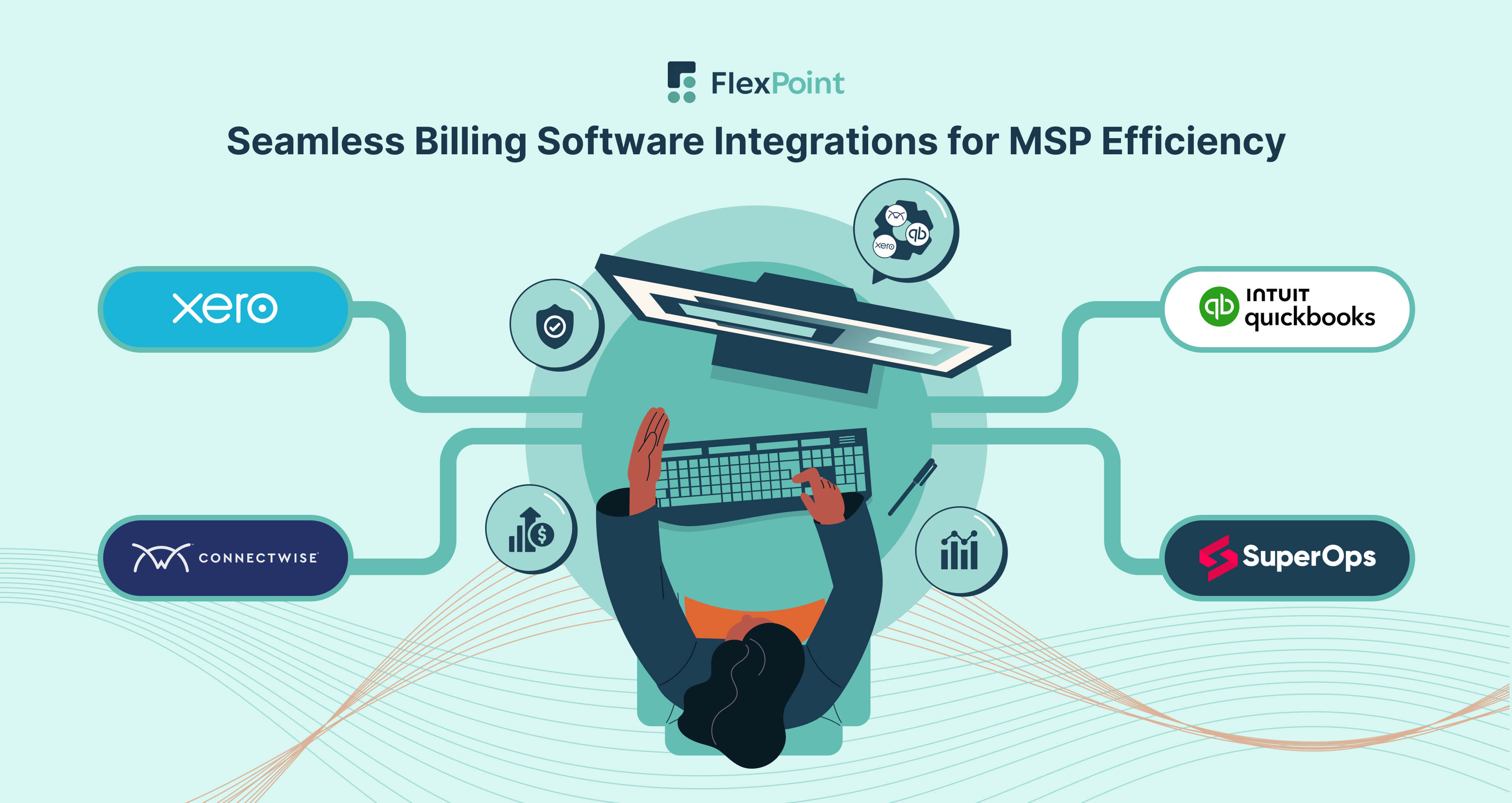
The 2023 Global Managed Security Survey reported that 32% of MSPs believe integrating technology solutions is a challenge.
Integrating billing software with core business systems is one of the most effective ways to optimize MSP financial operations.
Adequate billing integration helps synchronize data across multiple platforms, including PSA tools and accounting systems.
By linking these systems, MSPs can ensure seamless data flow, improve billing accuracy, and enhance financial visibility across the organization. This will result in more efficient operations, better decision-making, and fewer client disputes.
Billing integration streamlines financial processes and reduces the time and potential errors associated with manual billing/invoicing tasks.
Your team can eliminate redundant data entry, minimize mistakes, and improve invoicing accuracy. This is necessary to maintain healthy client relationships and ensure enhanced cash flow.
In this article, we will explore how integrating billing software with PSA and accounting tools can transform your MSP business. We will also cover why you need a billing software integration, the benefits of billing integration, and the essential integrations you need for your MSP business.
{{toc}}
Why MSPs Need Billing Software Integration

MSPs use a wide range of tools, such as PSA and accounting software, to manage their operations effectively.
Integrating these systems with billing software is essential to avoid reliance on manual data entry (which is susceptible to human error).
Additionally, traditional billing processes often lead to various challenges, such as
- Time-consuming manual processes: Many MSPs use manual billing and payment systems, which become more challenging as they gain more clients. Creating invoices, tracking payments, and managing overdue accounts take up a lot of time and effort. Manual processes also require extra follow-up work, making them inefficient.
- Risk of errors: Manual data entry also increases the likelihood of mistakes when transferring information between systems. Errors such as entering incorrect details and miscalculations can lead to client disputes.
- Inefficient data entry: Without integration, MSPs often need to enter data in duplicate across multiple platforms for accounting and payment, which is inefficient and adds unnecessary friction to the process.
However, integrating billing software with other MSP business tools, such as PSA software and accounting platforms, effectively addresses these challenges:
- Automated data syncing: It enables you to transfer and connect financial data between systems automatically. This eliminates the need for human intervention and reduces the risk of manual data entry errors. For example, when a service is completed and logged into the PSA, the billing software can automatically generate an invoice and send it to the client without manual intervention.
- Reduced manual intervention: Automation streamlines billing processes, reducing the need for manual intervention. This ensures your staff can focus on strategic tasks such as client relationship management.
- Ensuring billing accuracy: Billing software can generate more accurate invoices that reflect the correct services, fees, and surcharges by automatically pulling data from integrated systems. This reduces errors like incorrect billing amounts or missing client details, leading to fewer disputes and improved client trust.
Moreover, billing software integration creates a centralized platform for billing data, enhancing collaboration across departments.
With a centralized data point, finance teams gain access to accurate billing and payment data directly within their accounting software. This simplifies reconciliation, reporting, and cash flow management.
Your sales teams can also benefit from a clearer view of client billing information, payment history, and outstanding balances. This can be valuable during account management and renewal discussions.
The support teams can also access billing details to address client inquiries about invoices and payments. This improves customer service and speeds up the resolution of potential disputes.
{{ebook-cta}}
4 Key Benefits of MSP Billing Integration
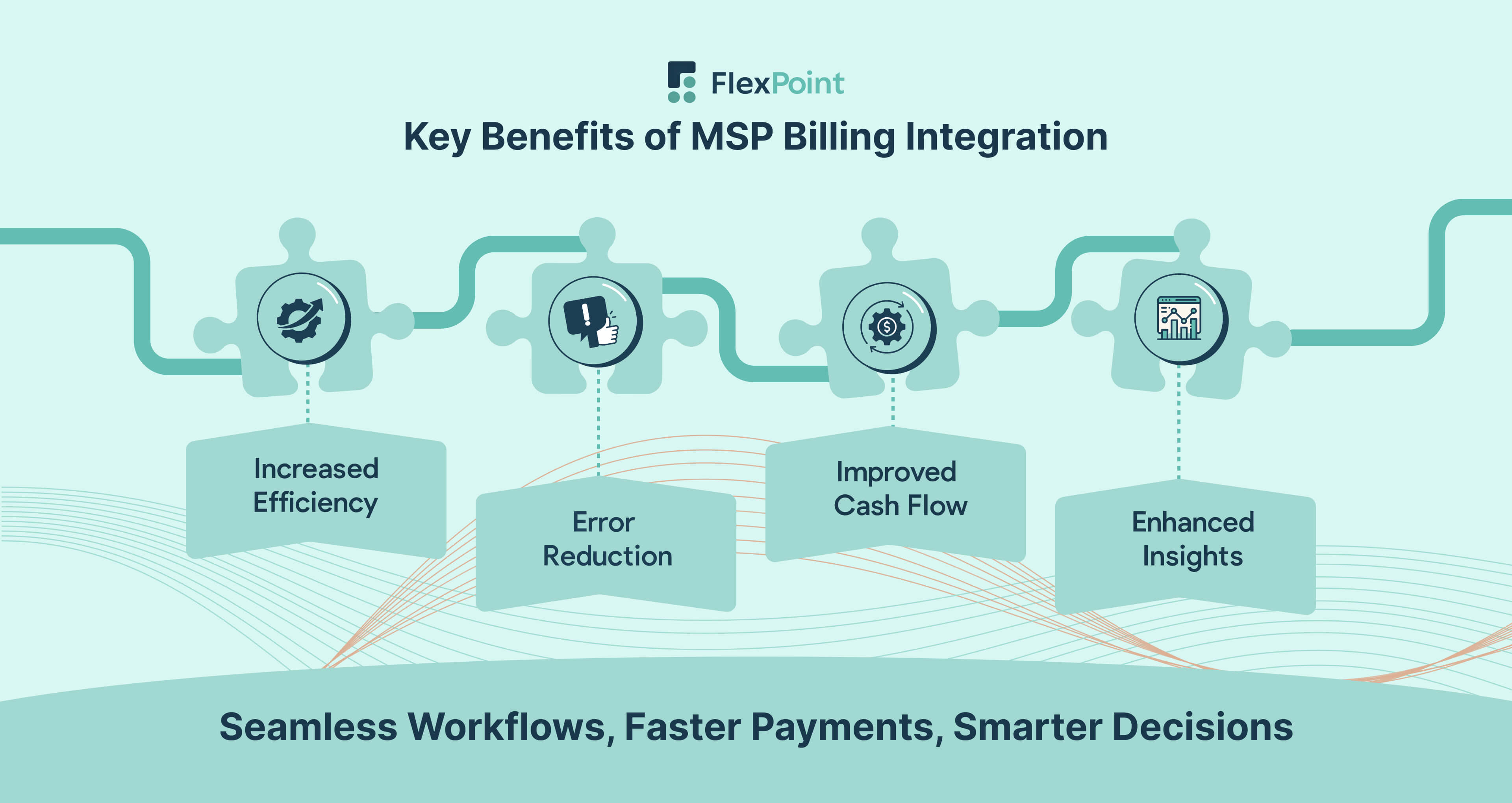
Integrating billing software with other business tools provides clear, comprehensive insights into an MSP's financial health by centralizing all accounting processes in one place.
This section highlights how seamless integration streamlines workflows, minimizes errors, and empowers smarter business decisions.
1. Increased Efficiency
According to LogicMonitor, 95% of MSPs believe automating processes is crucial for focusing on innovation and strategic goals.
Integration enables the automation of numerous key billing and payment workflows. For instance, when service tickets are completed or time is logged in the PSA, this information automatically flows into the billing system, removing the need to re-enter these details manually. Also, by linking service delivery directly to billing, integration accelerates the entire billing cycle.
When a service is completed or a billing period ends in the PSA, an invoice can be automatically generated and sent to the client.
This reduces delays associated with manual invoice creation and dispatch, leading to faster payment collection and improved cash flow.
Let’s take the example of WJP Technology Consultants, a Texas-based MSP that faced limitations with its previous billing solution. The solution offered impersonal support, overcomplicated customer onboarding, high monthly costs, and hefty transaction fees.
Seeking improvement, WJP’s President and CEO, Bill Perkins, discovered FlexPoint, which offered a seamless client onboarding process and cost-effective, personalized service.
FlexPoint streamlined WJP's operations by integrating seamlessly with QuickBooks, automating invoicing and payments, and providing a self-service client portal.
This eliminated manual tasks, reduced errors, and allowed clients to manage payments easily, saving time and improving efficiency.
As a result:
- Payment processing became 3x faster. This acceleration in the billing cycle ensured quicker access to funds.
- There was a 30% increase in clients using AutoPay. This automation reduced the need for manual follow-ups on payments.
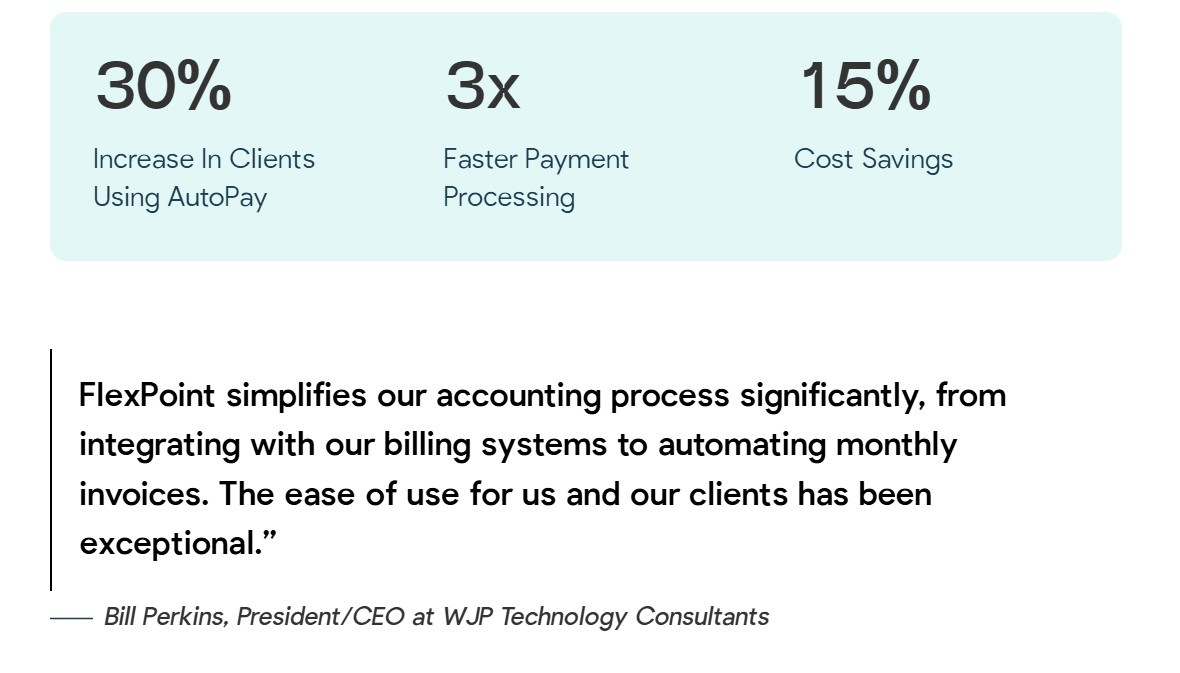
2. Error Reduction
According to Docuclipper, automated systems make only 1 to 4.1 errors per 10,000 entries compared to 100 to 400 errors by humans.
Traditionally, MSPs generate invoices in their PSA and enter the data separately into their accounting software and payment processing system–all separately and manually.
This complicated process is susceptible to incorrect amounts, wrong client details, or missed entries.
Integrated billing software automates the flow of data between these platforms.
For example, when a service ticket is closed and marked as billable in your PSA. This information can automatically populate an invoice within your integrated payment system and update your accounting software without manual intervention.
This automated data transfer drastically reduces the possibility of human error.
Also, by directly pulling data from the PSA, the integrated billing system can generate invoices that accurately reflect the services rendered.
This ensures that client and service data are consistent across both the PSA and billing platforms.
Let’s take the example of IT Vortex, a New Jersey-based MSP, faced challenges with its payment processes that led to potential errors. Using PayPal, they had to manually attach invoices, send out links, and chase down payments.
Seeking a more streamlined and reliable solution, IT Vortex turned to FlexPoint.
FlexPoint’s billing software streamlined IT Vortex’s operations by automating invoicing, eliminating manual distribution, and reducing errors.
Clients now make payments through FlexPoint’s user-friendly portal.
Payments are automatically reconciled with QuickBooks, removing manual data entry and reconciliation risks.
Additionally, FlexPoint’s client portal provides centralized access to invoices. This reduces the need for manual follow-ups and ensures clients always have accurate, up-to-date information.
As a result:
- Payment cycles were reduced by 2x to 30x, indicating a more efficient and less error-prone process.
- IT Vortex saved 60 hours per year in manual invoicing.

3. Improved Cash Flow
Research from MSP Insights revealed that 81% of managed services providers aren’t paid on time.
Consistent and timely payments create a more predictable income stream.
This improves cash flow and enables better financial planning, resource allocation, and business growth strategies.
Moreover, integrated systems can automatically dispatch invoices to clients upon completion of services or at predefined billing cycles.
It can be configured to send automated payment reminders for outstanding invoices, proactively addressing potential late payments.
For example, automated invoicing systems can create invoices in batches on specified dates with predefined templates.
Integration enables automated payment reminders and multiple payment options, accelerating payment collection.
Let’s take the example of Circuit Saviors, a California-based MSP, that sought a purpose-built solution for MSPs that would integrate easily with their existing systems.
Before adopting FlexPoint, Circuit Saviors encountered limitations with available payment processing options.
Many solutions charged volume fees or insisted on long-term contracts, which would have penalized Circuit Saviors for growth.
FlexPoint helped Circuit Saviors improve cash flow by offering an easy-to-use platform for both the company and its clients. This ensures quick adoption and smoother payment processes.
More so, features like recurring billing notifications encouraged timely payments. They could also save client payment methods and autopay options, streamline transactions, and ensure predictable revenue.
These improvements led to faster invoicing and quicker payment collection.
As a result:
- Circuit Saviors experienced an approximate 30% increase in cash flow.
- FlexPoint helps them eliminate 16+ hours of payment administration per month.
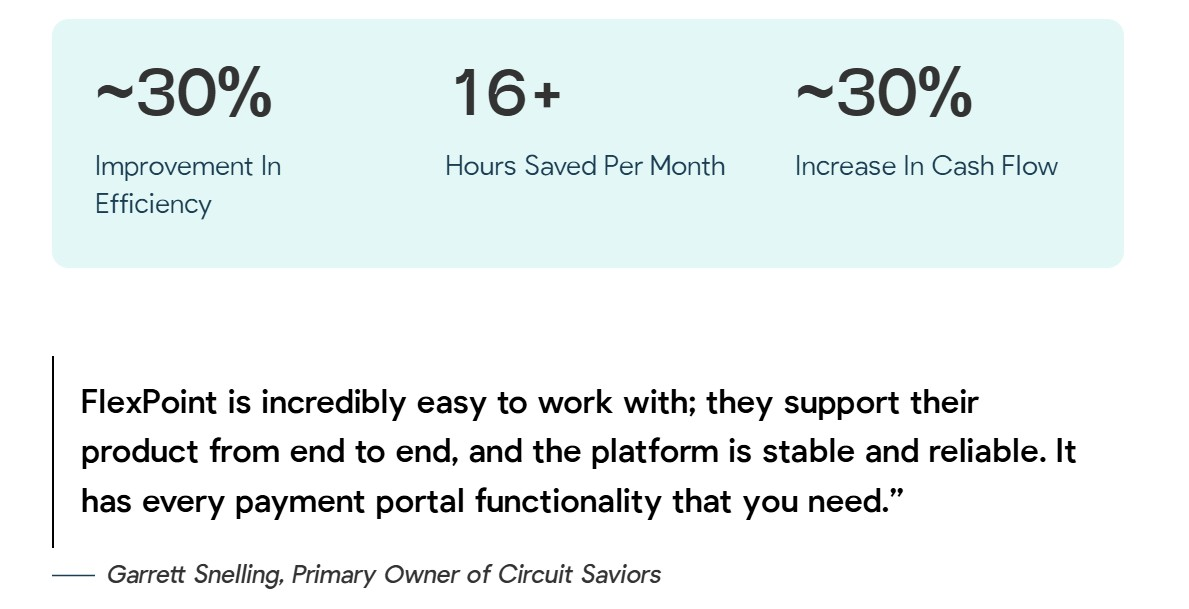
4. Enhanced Financial Insights
OpsClarity reports that 92% of businesses are boosting investments in real-time analytics and data solutions.
The core of enhanced financial insights is the real-time data synchronization across your entire back-office ecosystem
When a payment is processed or a service is rendered and marked billable in your PSA, this information is automatically and instantly reflected in your accounting system.
This eliminates the delays and potential inaccuracies associated with manual data transfer. As a result, you can access financial reports that are always current and reflect the most recent transactions and financial activities.
With real-time data integration, you can generate various comprehensive financial reports anytime.
These reports go beyond essential summaries. It shows detailed insights into billing key performance indicators (KPIs) such as revenue per client, outstanding invoices, cash flow, growth projections, and risk exposure.
3 Essential Integrations for MSP Billing

Effective billing integration solutions are crucial to streamlining operations and maximizing efficiency.
Here are three key integrations that billing software must have:
1. PSA Software Integration
The integration allows billing software to pull real-time data from the PSA system (ConnectWise, Autotask, SuperOps, HaloPSA) regarding completed service tickets, billable hours, project milestones, and contract terms.
This automation ensures that invoices are generated accurately, reflecting the services delivered. It is done without manual data entry, which is prone to errors.
For example, when a service ticket is resolved in ConnectWise, an invoice can be automatically synced to FlexPoint. This reduces billing inaccuracies and ensures clients are charged correctly.
Integrating billing and PSA systems creates a unified workflow between service delivery and financial processes.
This eliminates the need to switch between platforms to gather billing information, saving time and improving overall efficiency.
Aligning real-time client data from the PSA with billing processes ensures precise invoices, including details on service hours, contract terms, and usage metrics. It also eliminates common manual payment errors, such as incorrect charges or missing information, leading to fewer billing disputes and fostering trust with clients.
2. Accounting Software Integration
A key integration for MSPs would be the automatic synchronization of financial data between the billing software and the accounting platform.
When an invoice is generated or a payment is processed in the billing system, the information is automatically updated in your accounting software (QuickBooks Online, QuickBooks Desktop, Xero).
This real-time sync ensures that financial records are always current and consistent across both platforms.
Moreover, integrating billing and accounting software significantly streamlines the payment reconciliation process.
The system can automatically match payments received with the corresponding invoices recorded in the accounting software.
This automated matching saves considerable time and effort compared to manual reconciliation, ensuring all transactions are accurately recorded and accounted for.
Similarly, linking billing and accounting platforms gives you enhanced visibility into your financial health. The accounting software reflects revenue collected through the billing system in real time. This up-to-date financial overview allows you to manage your cash flow effectively, track outstanding invoices, and gain insights into revenue projections.
3. Payment Gateways and/or Payment Processor
An essential part of the MSP billing tech stack is the inclusion of a reliable payment processor or a payment gateway. This connection enables the billing system to automatically handle client payments, whether through ACH transfers, credit cards, or even flexible financing (or installment plans), without requiring manual intervention.
By utilizing billing software with built-in payment processing, MSPs can automate the entire payment cycle: clients receive invoices, choose their preferred payment method, and complete transactions within a secure environment. Once a payment is made, the billing system will update the status instantly.
This level of integration accelerates cash flow and reduces the risk of errors and failed payments. It also ensures that transaction records stay consistent across systems and supports automated reconciliation when paired with accounting software.
Moreover, offering multiple payment options improves the client experience, making it easier for them to pay on time.
When payment gateways are correctly built into your billing platform, they create a seamless and reliable workflow that connects invoicing, payments, and reporting into one seamless process.
Conclusion: How FlexPoint Supports MSP Billing Integration
Efficient billing processes are the backbone of MSP financial management, and seamless integration is key to unlocking their full potential.
Throughout this article, we’ve explored how billing software integrations streamline operations, enhance client satisfaction, and improve financial accuracy. We also discuss why integration is essential and what essential integrations to make.
For MSPs seeking to elevate their financial management, FlexPoint offers a scalable, client-focused solution designed to meet their unique needs.
Its integration capabilities ensure a smooth transition to a more efficient billing system while delivering measurable results in accuracy, transparency, and operational ease.
FlexPoint’s advanced platform integrates with popular PSA tools and accounting software, ensuring data flows effortlessly across systems.
This connectivity eliminates the need for manual data entry, reducing errors and saving valuable time.
You can centralize your billing, invoicing, and payment tracking, creating a unified process that supports operational efficiency and compliance.
For instance, SkyCamp Technologies, an Ohio-based MSP, struggled with manual payment processes and disjointed billing systems.
Managing multiple platforms and reconciling invoices by hand was time-consuming and inefficient for President Dan Illausky and his team.
Switching to FlexPoint solved these issues, and the platform integrated seamlessly with QuickBooks, automating invoicing and reconciliation.
This integration helped SkyCamp spend less time on accounting because all its accounting processes are in one place.
With FlexPoint, SkyCamp saved eight monthly billing hours, increased AutoPay usage by 20%, and processed late payments 30% faster.

Proper integration between all your business tools can help your MSP achieve similar financial results.
Take your MSP’s billing to the next level with FlexPoint’s robust integration solutions.
Streamline your billing process, enhance client experiences, and quickly achieve financial accuracy.
Schedule a demo today to see how FlexPoint can transform your billing operations.
{{demo-cta}}
Additional FAQs: MSP Billing Integration
{{faq-section}}



